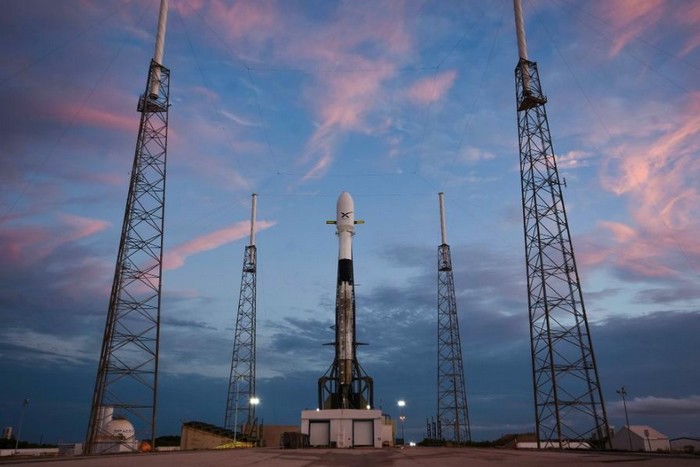The first 60 satellites of SpaceX’s Starlink constellation were successfully orbited this Thursday, May 23. The satellite constellation will aim to provide global internet access and could one day be made up of around 12’000 satellites.
This is a SpaceX Falcon 9 rocket that took off from Cape Canaveral, Florida (USA) on Thursday night to put into orbit the first 60 satellites, to offer a global internet connection.

The SpaceX Falcon 9 rocket took off from Cape Canaveral, Florida, on Thursday night. Credits: SpaceX
The satellites were deployed at about 450 kilometers above sea level. Then they propelled themselves (through an onboard propulsion system) to an altitude of about 550 kilometers, beyond the International Space Station (ISS), which is about 400 kilometers above sea level.
Successful deployment of 60 Starlink satellites confirmed! pic.twitter.com/eYrLocCiws
— SpaceX (@SpaceX) May 24, 2019
However, these satellites are still much closer to Earth than other existing satellites in Earth orbit, such as those in geostationary orbit, some 36,000 kilometers from the Earth’s surface.
The satellites of the Starlink constellation will all be in low Earth orbit
The interest for these satellites to be in such a close orbit, is that the response time will be very short for users on the ground.
Below, here are what the SpaceX mini satellites look like:
First 60 @SpaceX Starlink satellites loaded into Falcon fairing. Tight fit. pic.twitter.com/gZq8gHg9uK
— Elon Musk (@elonmusk) May 12, 2019
Each satellite is equipped with solar panels, high-speed antennas and has a total mass of 227 kilos. The relatively flat design of these machines makes it possible to deploy a large number of them in a single launch, while optimizing the space in the rocket.
Starlink satellites are equipped with one solar array instead of two, minimizing potential points of failure pic.twitter.com/bJirVr67fF
— SpaceX (@SpaceX) May 24, 2019
On the other hand, the disadvantage is that it takes a lot of satellites to be able to cover the whole Earth. In addition, they will “fall back” faster in the earth’s atmosphere: according to the company, after a few years. SpaceX will have to replace them regularly. In addition, to respond to fears of an explosion (given the number of satellites and space debris already present), SpaceX promised that they will disintegrate to 95% at the end of their life.
Note that SpaceX wishes to put into orbit some 800 satellites to complete its constellation. “To minimize the risk of collision between satellites placed in orbit, each element of the constellation has an anti-collision technology,” the company said. Eventually, the company wants to deploy more than 11,000 satellites in low orbit.
With this success, SpaceX wants to seize a part of the future Internet of space market, coveted by many rival companies, such as the startup OneWeb or the giant Amazon, which is however less advanced (with its project Kuiper) .
Connect to the SpaceX Internet from Earth
To be able to connect to the “SpaceX Internet” from Earth, it will be necessary to bring an antenna type device. More information will follow shortly on this subject. SpaceX will most certainly partner with telecom operators, however, at present, the company would not have begun to prospect for customers.
Last week, Elon Musk explained that the system would only be operational when (approximately) 800 additional satellites will be in orbit, which will require, according to him, a dozen launches.



